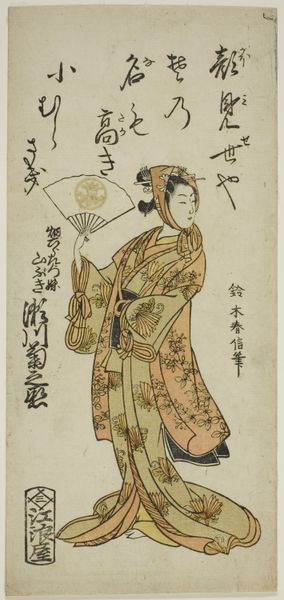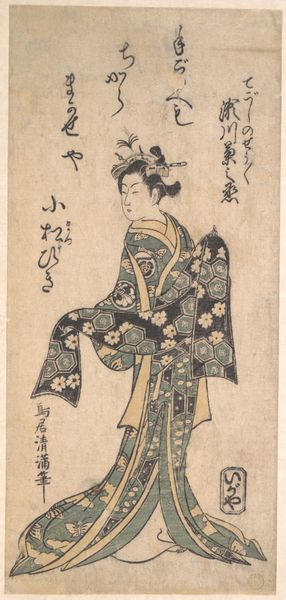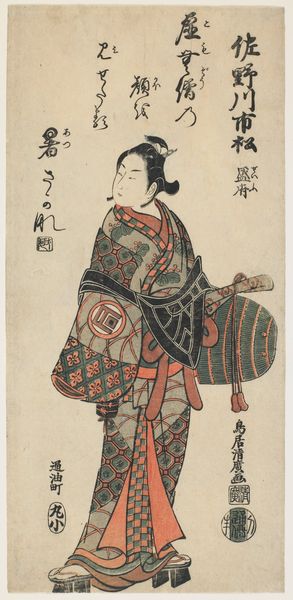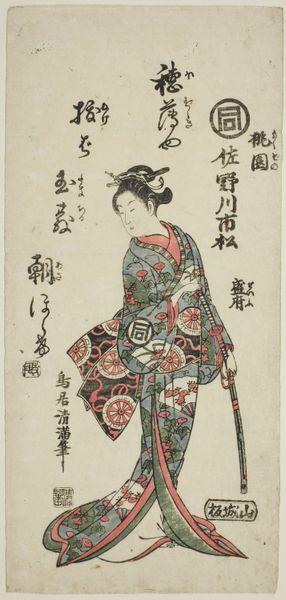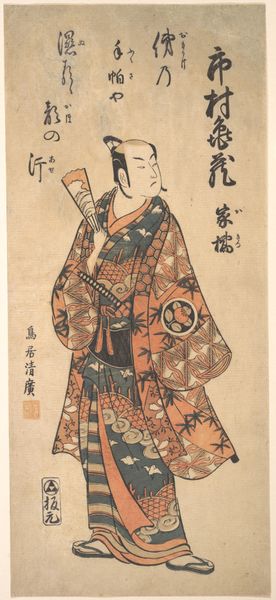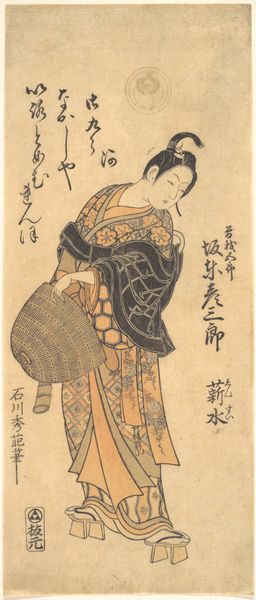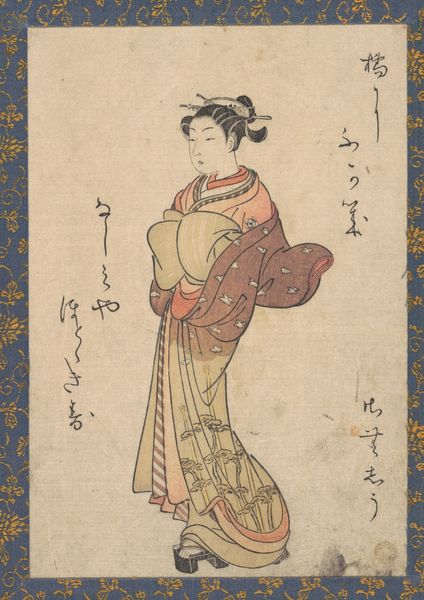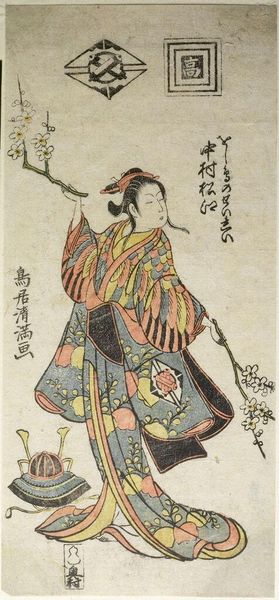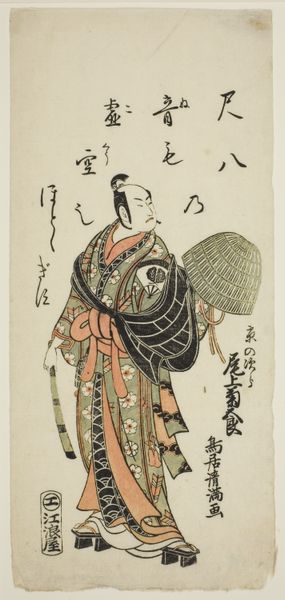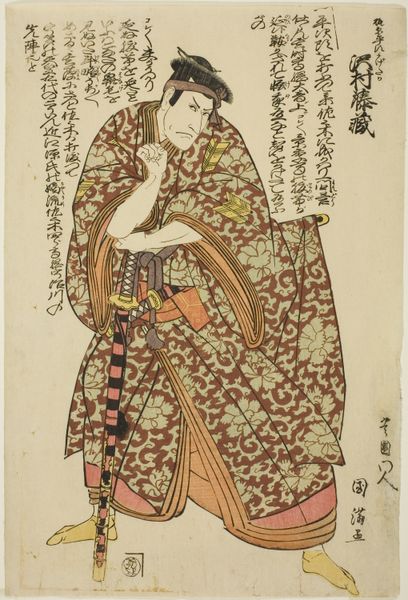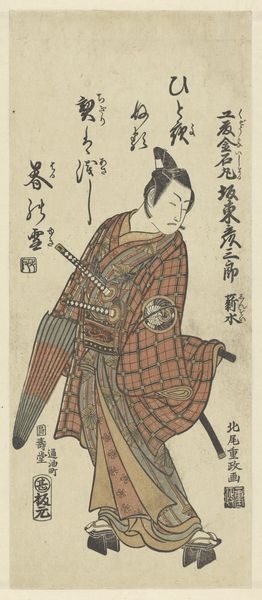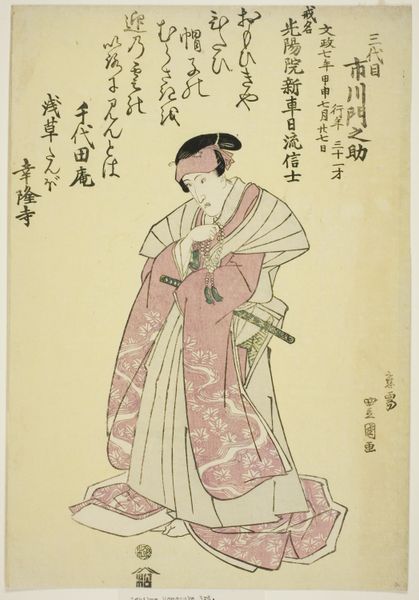
The Second Segawa Sangoro in the Role of Kiyomihara Tengyoku 1751 - 1771
0:00
0:00
print, woodblock-print
#
portrait
# print
#
asian-art
#
ukiyo-e
#
figuration
#
woodblock-print
Dimensions: H. 11 7/8 in. (30.2 cm); W. 5 5/8 in. (14.3 cm)
Copyright: Public Domain
This woodblock print by Torii Kiyomitsu depicts the actor Segawa Sangoro II in the role of Kiyomihara Tengyoku. It was made in Japan during the mid-18th century, a time when the Tokugawa shogunate enforced strict social hierarchies. The Kabuki theatre played a crucial role in Edo period culture, offering a space for social commentary and critique. Actors, like Segawa Sangoro II, became celebrities, and their images were widely circulated in prints such as this. Kiyomitsu's depiction captures the stylized gestures and elaborate costumes of Kabuki, transforming the actor into an idealized figure. The crane above him is a symbol of longevity and good fortune, but it also suggests the character's elevated status. The print itself is not merely a record of a theatrical performance; it actively participates in constructing and disseminating ideas about gender, class, and identity. By studying these images, along with playbills, diaries, and other archival material, we can gain insight into the complex social dynamics of Edo period Japan.
Comments
No comments
Be the first to comment and join the conversation on the ultimate creative platform.
